SAP POS
Filter By
Browse By
- SAP Analytics and AI
- SAP Application Development and Integration
- All SAP Application Development and Integration
- SAP ABAP
- SAP ABAP Development Tools
- SAP ABAP Test Cockpit
- SAP API Management
- SAP BAPI
- SAP Basis
- SAP BRF
- SAP Business Application Studio
- SAP CMS
- SAP Design Studio
- SAP Development Tools
- SAP DevOps
- SAP EAI
- SAP EDI
- SAP Extension Suite
- SAP Fiori
- SAP Fiori Elements
- SAP Integration Suite
- SAP Low Code Application Development
- SAP Low Code Automation
- SAP Netweaver
- SAP Release Management
- SAP UI5
- SAP Web Application Server
- SAP Web IDE
- SAP Business Process Management
- SAP Center of Excellence
- SAP CIO
- SAP Customer Experience
- SAP Data and Data Management
- All SAP Data and Data Management
- SAP BW
- SAP BW/4HANA
- SAP Crystal Reports
- SAP Data Archiving
- SAP Data Center
- SAP Data Governance
- SAP Data Integration
- SAP Data Migration
- SAP Data Quality
- SAP Data Services
- SAP Data Strategy
- SAP Data Visualization
- SAP Data Warehouse Cloud
- SAP DMS
- SAP Document Control
- SAP EIM
- SAP ETL
- SAP ETL Tools
- SAP HANA
- SAP HANA Administration
- SAP HANA Deployment Infrastructure
- SAP HANA Studio
- SAP Master Data
- SAP Master Data Governance
- SAP MDM
- SAP Enterprise Architect
- SAP Enterprise Asset Management
- SAP ERP
- SAP Finance
- All SAP Finance
- SAP Accounting
- SAP AR AP
- SAP Asset Accounting
- SAP Billing Systems
- SAP BPC
- SAP BRIM
- SAP Cash Management
- SAP Central Finance
- SAP Controlling
- SAP COPA
- SAP Cost Center Accounting
- SAP Currency Risk
- SAP e-invoicing
- SAP FICO
- SAP Finance Automation
- SAP Advanced Financial Closing
- SAP Financial Consolidation
- SAP Financial Planning
- SAP FX Risk
- SAP General Ledger
- SAP Global Tax Management
- SAP Hyperion
- SAP Order to Cash
- SAP Payment Processing
- SAP Profitability Analysis
- SAP Rebate Management
- SAP S/4HANA Finance
- SAP SWIFT Compliance
- SAP Treasury Management
- SAP Universal Journal
- SAP Governance Risk and Compliance
- SAP Human Capital Management
- SAP Intelligent Technologies
- SAP Platform and Technology
- All SAP Platform and Technology
- SAP Business Technology Platform
- SAP Cloud
- SAP Cloud Connector
- SAP Cloud Integration Platform
- SAP Cloud Migration
- SAP Cloud Platform
- SAP Cloud Providers
- SAP Cloud Strategy
- SAP Digital Signature
- SAP Container Platform
- SAP HANA Enterprise Cloud
- SAP Digital Asset Management
- SAP Smart Forms
- SAP HEC
- SAP Digital Integration Hub
- SAP Hyperscalers
- SAP Infrastructure
- SAP Messaging
- SAP Quality and Testing
- SAP Security
- SAP Spend Management
- SAP Supply Chain Management
- All SAP Supply Chain Management
- SAP APO
- SAP Asset Management
- SAP Business Network
- SAP Digital Manufacturing Cloud
- SAP Digital Twin
- SAP EWM
- SAP IBP
- SAP Inventory Management
- SAP Label Printing
- SAP Logistics
- SAP Manufacturing
- SAP Manufacturing Automation
- SAP MES
- SAP MII
- SAP MM
- SAP MRO
- SAP MRP
- SAP Order Management
- SAP Plant Maintenance
- SAP PLM
- SAP Production Planning
- SAP S&OP
- SAP SD
- SAP SPM
- SAP Supply Chain Planning
- SAP Track and Trace
- SAP Transportation Management
- SAP System Administration
What Is Point of Sale?
Point of Sale (POS) represents the customer payment transaction for a brick and mortar or online retailer. As part of the POS, retailers rely on hardware and software to complete the transaction and process the payment.
POS: More than a Transaction
While the POS may appear simply as a transactional activity, it has implications for customer experience and profit for the retailer. Customers want and expect a checkout process that is quick, hassle-free, and easy to navigate.
What Is Point of Sale?
Point of Sale (POS) represents the customer payment transaction for a brick and mortar or online retailer. As part of the POS, retailers rely on hardware and software to complete the transaction and process the payment.
POS: More than a Transaction
While the POS may appear simply as a transactional activity, it has implications for customer experience and profit for the retailer. Customers want and expect a checkout process that is quick, hassle-free, and easy to navigate.
The POS is also critical for understanding customer preferences in terms of product selection and variety. Retailers gain valuable analytical insight into which products are selling, at what time of day, and in what quantity. This can provide better decision-making for the marketing and sales teams.
Lastly, integration between the POS, inventory management, and operational systems is critical for maintaining supply and demand balance and identifying potential revenue opportunities. Replenishment is essential for retailers to ensure the product is on the shelf where and when customers need it. Data from the POS should also be shared with suppliers to collaborate on product promotions and new product introductions.
SAP Customer Checkout Application
SAP’s point of sale solution is SAP Customer Checkout. According to SAP, the following are key POS capabilities of the application:
- Manage sales, returns, payments, coupons, and gift cards with a central POS system
- Access real-time reports, control sales and financial results, and extend and scale the application with flexibility
- Integrate with SAP S/4HANA or other ERP systems, or use as a stand-alone application
Key Consideration for SAPinsiders
- Case Study: AGRAVIS Transforms Its POS System for the Future. In this SAP case study, German agricultural trading company AGRAVIS needed to replace its legacy POS system to meet new cash register regulations and future POS transaction requirements. The company wanted a solution that integrated with its current software landscape, but also created a single source of truth of real-time sales and inventory data. AGRAVIS also required a solution that enabled capabilities for future omnichannel retailing. It chose the SAP Customer Checkout application with native SAP S/4HANA integration and linkage to existing legacy warehouse management systems.
A vendor in the point-of-sale space includes: Verbella.
365 results
-

Tips on How to Plan Your Migration from Costing-Based CO-PA to Account-Based CO-PA
Reading time: 14 mins
See what you gain and lose by switching from costing-based Profitability Analysis (CO-PA) to account-based CO-PA in the SAP S/4HANA Finance environment. Review a proposed approach to pull the plug on costing-based CO-PA. Membership Required You must be a member to access this content.View Membership LevelsAlready a member? Log in here
-

Introduction to SAP Joint Venture Accounting, Part II
Reading time: 8 mins
A joint venture (JV) is an arrangement in which two or more parties come together and agree to pool their resources for a specific task. This task can be a new project or any other business activity. In a joint venture, each partner is responsible for profits, losses, and costs associated with the venture. Joint…
-

Why Your POS System Needs Real-Time Tax Calculations in 2023
Reading time: 2 mins
As inflation and other economic challenges continue to impact consumer spending behavior, seamless and exceptional service for consumers will remain critical in 2023. If not provided, customers may look elsewhere.
-
-

Digital Transformation: How Inetum has Optimized La Poste’s ERP
Reading time: 2 mins
Facing the scale of its activities and the complexity of its financial flows, La Poste relies on a reliable and efficient information system to account for its operations. With millions of transactions processed daily, securing its SAP ERP has become a strategic priority, especially when upgrading to a newer version.
-

 Premium
Premium
Improve SAP NetWeaver PI Value Mapping Performance in a High-Volume Situation
Reading time: 15 mins
Value mapping in SAP NetWeaver Process Integration can take up a lot of processing time and lead to poor performance. Learn how memory is consumed in high-volume scenarios with a large number of value mapping groups, which key factors affect performance, and what to do to achieve the best performance when using value mapping functionality....…
-

 Premium
Premium
Ensure Accurate Inventory Valuation by Using Actual Costing Functionality
Reading time: 57 mins
Break through a common misconception about how the actual cost is updated as the standard price in the material ledger and actual costing. Understand the process of how you can use the functionality to compute the actual cost of the material and carry out accurate inventory valuation at the end of the period. By following...…
-

 Premium
Premium
Use Real-Time Hierarchies to Map Transactions to the Proper Groups
Reading time: 45 mins
Create BW hierarchies to track products sourced from merging suppliers, and avoid the inaccuracies that can result when your supply partners buy (or are bought by) other firms. With an example based on a fictitious international company, the author demonstrates how to assign purchase orders correctly via a real-time hierarchy with user exits or BAdIs....…
-
-

 Premium
Premium
Build Bullet-Proof Testing Strategies to Comply with Legal and Industry Regulations
Reading time: 14 mins
Organizations need to design and develop effective testing strategies to comply with Sarbanes-Oxley and industry-specific requirements. These testing strategies and methodologies need to cover both normal day-to-day maintenance of business scenarios and major initiatives such as upgrades, fresh implementations, and more. See how to build and follow a five-phase plan to perform testing on your...…
-

 Premium
Premium
SAP CRM 7.0: Enhance SAP CRM Business Objects to Create Custom Workflows
Reading time: 14 mins
Standard business object types allow you to build workflows based on their functionality. However, you might encounter situations in which the available functionality of the objects does not fit your organization’s needs. Learn how business object types can be enhanced in SAP CRM 7.0 to support your specific business requirements for automated SAP Business Workflow...…
-

 Premium
Premium
Reduce Your Company’s Spending with Automatic Clearing of Vendor Down Payments
Reading time: 12 mins
See how to use the down payment process with the automatic clearing option with the materials management (MM) and Financial Accounting (FI) modules in SAP ERP Central Component (SAP ECC) 6.0. These solutions have already been implemented in production environments for MM and FI in SAP ECC 6.0. However, the processes also apply to previous...…
Become a Member
Unlimited access to thousands of resources for SAP-specific expertise that can only be found here.
Become a Partner
Access exclusive SAP insights, expert marketing strategies, and high-value services including research reports, webinars, and buyers' guides, all designed to boost your campaign ROI by up to 50% within the SAP ecosystem.
Upcoming Events
Related Vendors
Your request has been successfully sent


